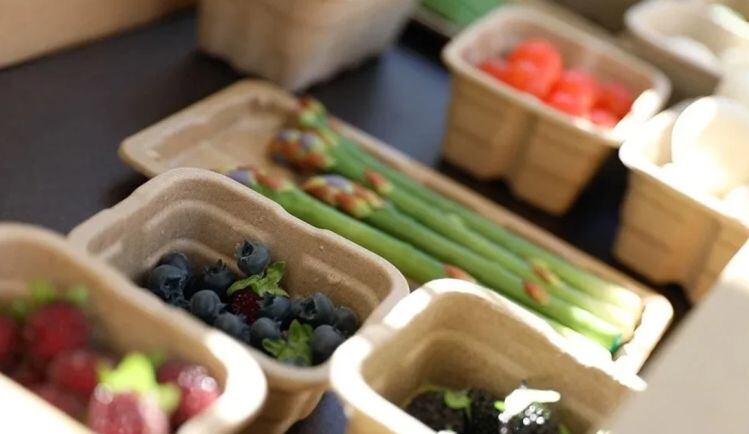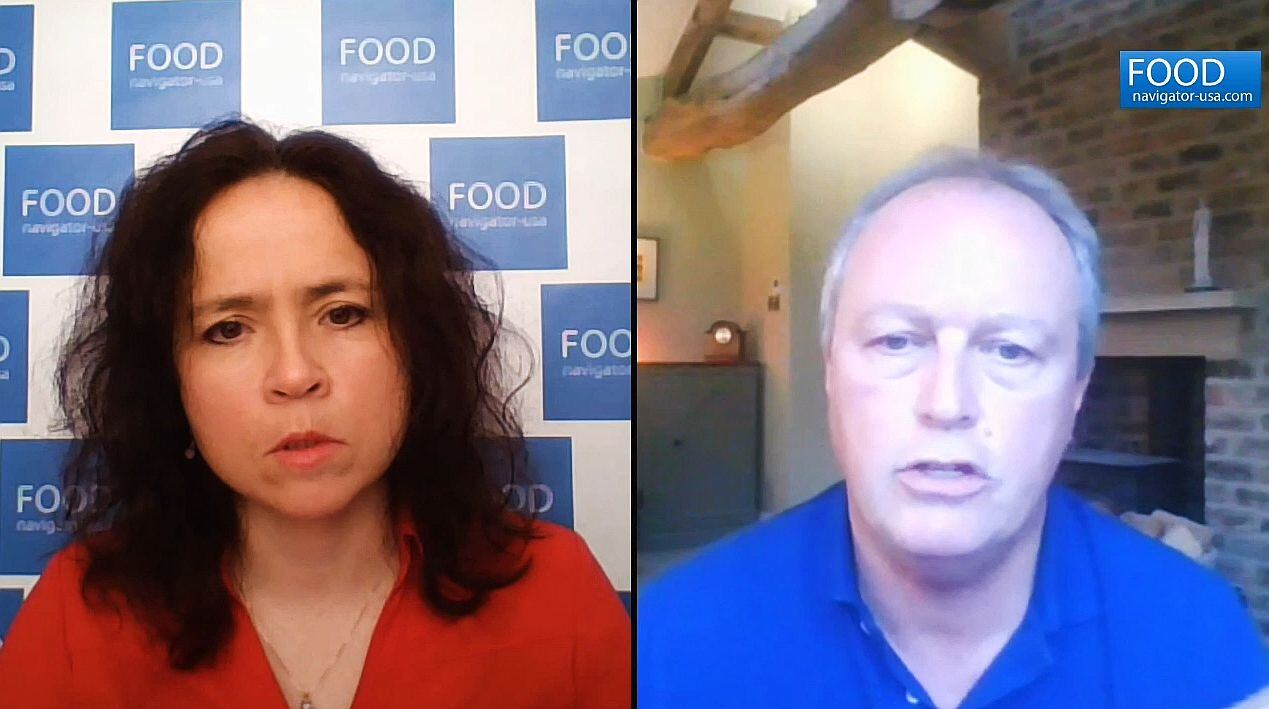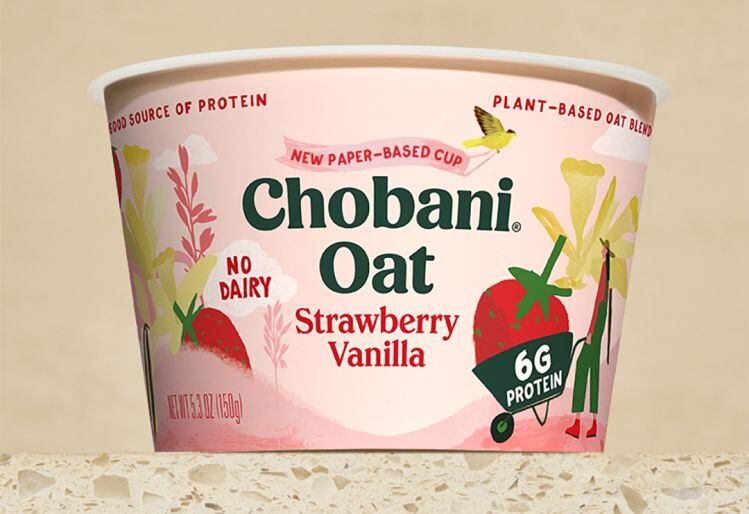“If you’re using paper, but you’re putting a plastic liner in it, you haven't really solved anything,” says Jeff Bassett, SVP at plant-based packaging specialist Footprint, which makes molded fiber products that can be recycled or composted, but have the kind of barrier properties firms expect from plastic (warding off moisture, oil, and vapor), with early food customers including Conagra’s Healthy Choice microwaveable Power Bowl brand.
“If anything, you've just taken the fiber and made it non-compostable and non-recyclable. We’re looking to deliver a plastic-free, recyclable, compostable yogurt cup probably later in 2022.”
The challenge for firms seeking more sustainable packaging in the yogurt aisle, said Bassett, is shelf-life: “For a yogurt cup in the US you’re looking at 90+ days for a product in a refrigerated state with something that's alive on the inside.
“So we’re leveraging some of the building blocks that we’ve used for something like a mac & cheese cup, and then trying to take our technology from the frozen foods aisle and apply that to a yogurt cup, although in the US, the shelf-life requirements for yogurt vastly exceed what we see in Europe.”
‘Oxygen and water vapor move through pretty much every material over time’
But why is it more challenging to make a compostable, recyclable, plant-based material that would work for a yogurt cup, versus, say, a coffee cup?
“It's all about transmission rates [of gases and moisture through materials],” said Bassett, who points out that the barrier properties of Footprint’s biomaterials might only have to work for at most 72 hours for a single-use coffee cup of the type a Starbucks or Dunkin’ might use, whereas a yogurt cup has to keep its contents safe for weeks.
“Oxygen and water vapor move through pretty much every material over time,” noted Bassett, who says Footprint is always trying to find a balance between creating a material that is sufficiently robust that it will protect its contents throughout its shelf-life, while at the same time will still break down – in the right conditions – when it has served its purpose, and can also be recycled.
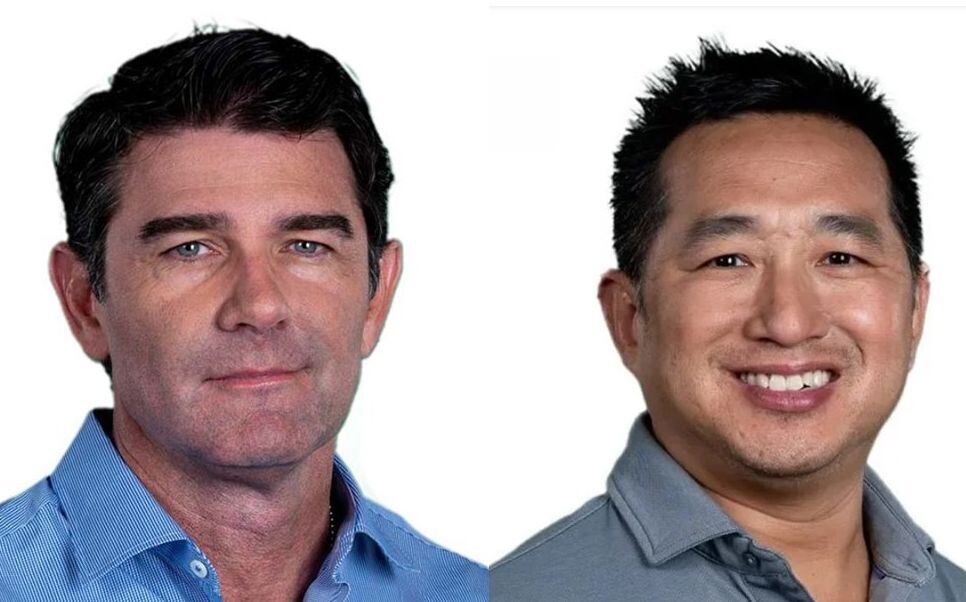
Founded in 2014 by former Intel engineers Troy Swipe (CEO - pictured left) and Yoke Chung (CTO - pictured right), Footprint has its corporate HQ and technology development center in Gilbert, Arizona; and manufacturing facilities in Richburg, South Carolina, and Mexicali, Mexico (the latter site is currently being expanded and will operate 1.5 million square feet of manufacturing space by the end of year 2022).
The firm, which is building an innovation center in Eindhoven in the Netherlands, is also looking to develop a European manufacturing facility, most likely in Poland, says SVP Jeff Bassett. Image credit: Footprint
Meat trays, coffee cups, oven-safe and microwaveable, film sealable ready meal trays, fresh produce cartons, shelf-stable, printable cups…
So what’s the Holy Grail when it comes to sustainable packaging?
Right now, Footprint can make everything from meat trays, coffee cups, oven-safe or microwaveable and film sealable ready meal trays, fresh produce cartons, shelf-stable cups for products such as mac & cheese that can be printed on, and more, said Bassett.
“We’re already transforming the grocery store in the terms of frozen food, but where I see things really expanding is in the center of the grocery store, the shelf stable cups, things you add water to and heat up. We’re also making significant inroads into getting rid of plastic and Styrofoam supermarket trays.
“Tyson Foods is using our product, along with Beyond Meat, Conagra, Daily Harvest, Sweetgreen, and Sambazon… and major grocery stores such as Albertsons are using our meat trays and for fresh veg. And if you bought any sweetcorn over the summer at Costco, it probably came in our fiber trays as well.”
Coffee cups, however, are the “next major category,” he said.
“That'll be one that we really hit in next year and we’re getting some pretty large customers teed up."
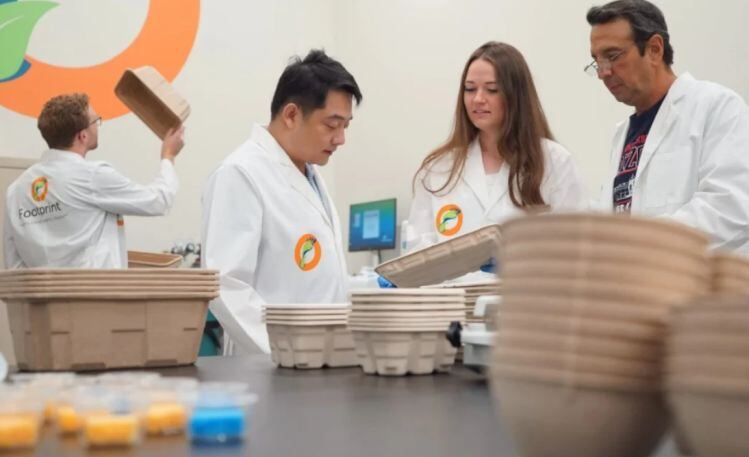
‘We know all of our fiber substrates meet the recyclability guidelines for products in the paper stream’
But how does Footprint’s patented technology - which claims to be the “only plastic-free solution that offers extended barrier properties to replace rigid plastics” - work?
If you look at fibrous materials under a microscope, said Bassett, “They look like an interwoven bird's nest, so the first thing is, mechanically, how can we reduce the holes in the bird’s nest? Then we use additional chemistries to plug those holes with starches and other bio-materials that close the holes. For some extended shelf-life products we may have a bio-based spray coating as well.”
He won’t disclose the source of the starches, but said Footprint is not diverting products that would otherwise have gone into the food supply. Likewise, for the fibers, which Footprint can source from virgin fiber or corrugated waste, “If we’re in North America, we’re not pulling bamboo or bagasse [the part of sugar cane left over after refining] from Asia.”
He added: “We need long fibers, short fibers, fibers that are very curly and others that have really high tensile strength, so it's an engineered solution, usually a mixture of [FSC certified] hardwood and softwood, and then we apply steam and pressure before using starches and proteins to fill in any remaining holes in the structure.

“We know all of our fiber substrates meet the recyclability guidelines for products in the paper stream, but if there’s food waste on the packaging, we always recommend composting.
"Now, of course, composting facilities aren't that widely available yet, but it's almost like that Field of Dreams problem: if there aren’t a bunch of compostable materials in a market space, who’s going to build a composting facility? One has to come first.
“And even if we're heading into a landfill, at least we’re not putting petroleum-based plastics in there.”
Supply chain integration
So how does Footprint’s technology integrate into the CPG supply chain?
“We focus on being plug and play for our customers, so we develop final finished formed goods [such as pre-molded produce trays],” said Bassett.
“But for some of our newer technologies that we're implementing for Annie's mac and cheese line, the cup arrives to them pre-printed, whereas before it would be a blank cup that they would fill and then have to apply a secondary wrap.”
Pricing and industry take up
Asked how the food industry has received Footprint’s packaging, he said: “It’s like any new technology. There are the early adopters, and then other companies that will say, I’ve got to see 10 of my competitors do it before I'll even touch it."
While the lumber shortage impacted fiber prices, “one reason people want to migrate from petroleum based products to fibers is because it’s generally a more stable marketplace,” he claimed. “Plastics can skyrocket and move all over the place, whereas fiber is generally very stable.”
As for pricing, he said, “Right now we're about 10-15% more expensive, but over the next three to four years we think we’ll be able to bring our pricing down to be at parity with plastic.”

